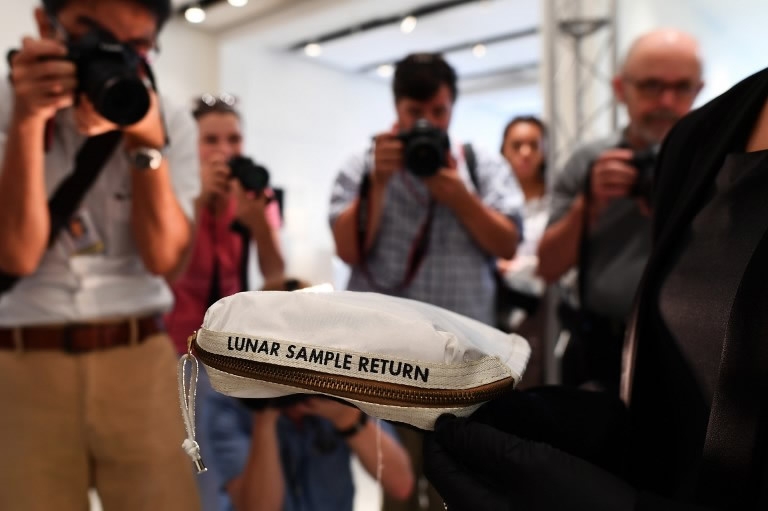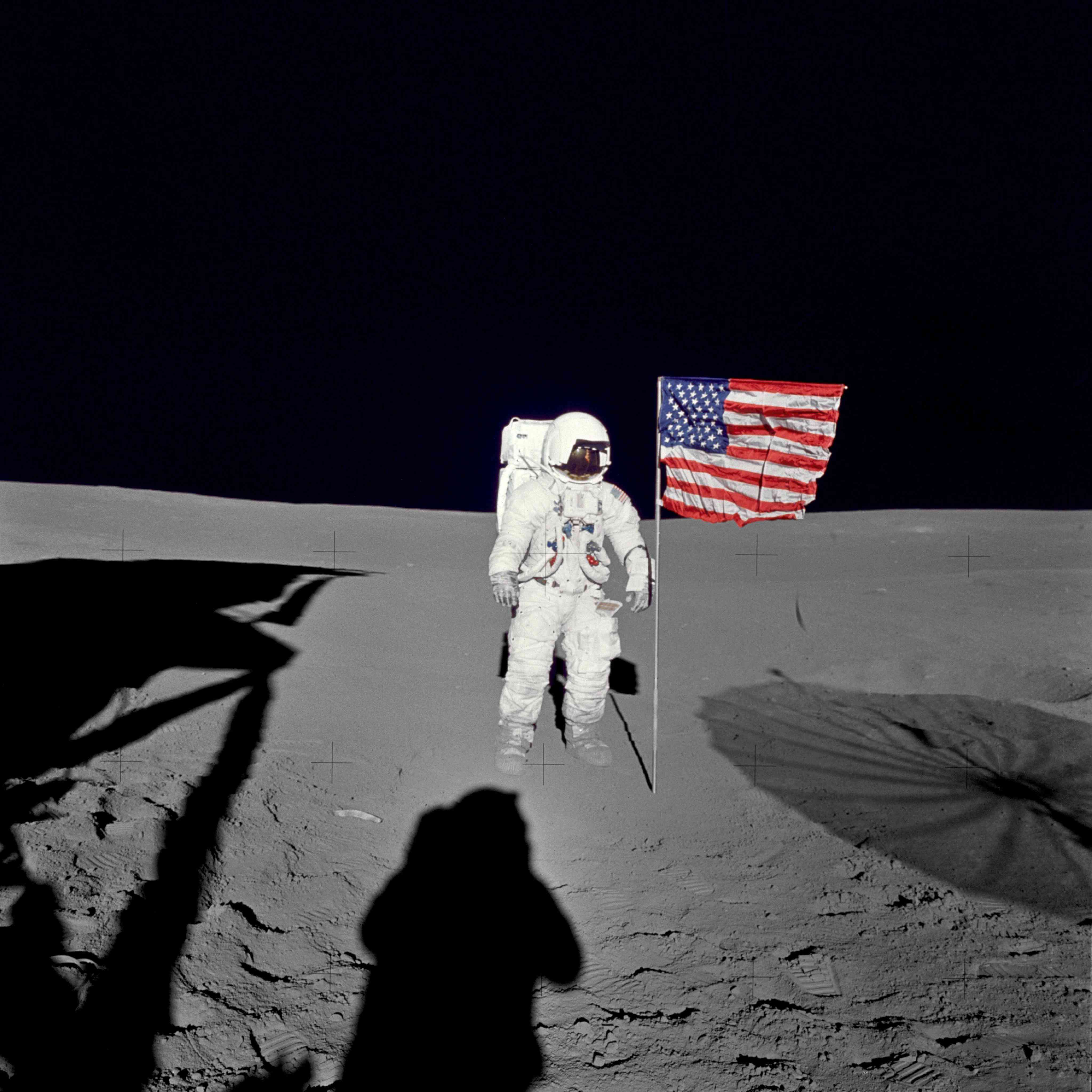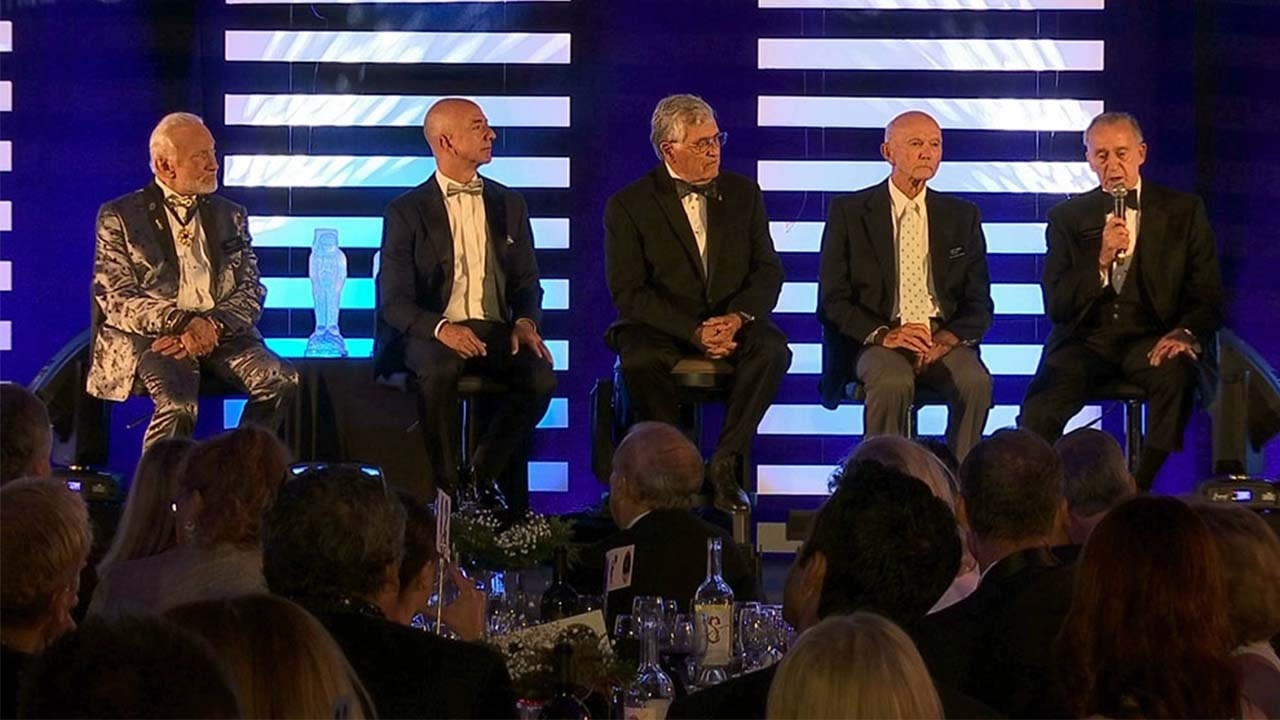By CGTN's Hendrik Sybrandy
This year marks 50 years since America’s Apollo spaceflight program began.
US President John F. Kennedy had a goal of landing a man on the moon and returning him safely to Earth was reached in 1969 and 12 Apollo astronauts would walk on the moon.
Last week, 8 NASA veterans from that era marked the anniversary at an air show in the state of Wisconsin.
For those who closely followed America’s space exploits in the 1960's and 70's, the men who helped create a new form of aviation with Apollo’s space program still stand tall.

Sotheby’s Cassandra Hatton displays the Apollo 11 Contingency Lunar Sample Return Bag, used by Neil Armstrong on Apollo 11 to bring back the very first pieces of the moon ever collected, during a media preview for Space Exploration auction in New York, the US on July 13, 2017. /AFP Photo
Sotheby’s Cassandra Hatton displays the Apollo 11 Contingency Lunar Sample Return Bag, used by Neil Armstrong on Apollo 11 to bring back the very first pieces of the moon ever collected, during a media preview for Space Exploration auction in New York, the US on July 13, 2017. /AFP Photo
“It was basically a course in immersing yourself in a new industry,” claimed Frank Borman, an Apollo 8 astronaut.
They shared stories at the EAA AirVenture Oshkosh air show. “We went to the moon to explore the moon and we discovered the earth,” Jim Lovell, who served on the Apollo 8 and 13 missions said.
They talked about an Apollo 11 moon landing that was never a sure thing.

The flight plan of Apollo 13 is displayed during a media preview for Space Exploration auction at the Sothey's in New York, the US on July 13, 2017. /AFP photo
The flight plan of Apollo 13 is displayed during a media preview for Space Exploration auction at the Sothey's in New York, the US on July 13, 2017. /AFP photo
Buzz Aldrin, an Apollo 11 astronaut, admitted, “The three of us felt that maybe there was a 60% chance that we would able to land successfully.”
They also talked about the near-tragic Apollo 13 mission that was memorialized in film.
All these years later, the bonds of this exclusive group forged through unforgettable missions are still strong.
One astronaut described Apollo as the last great flying club, and all things aviation is what this air show is all about. It’s a passion that is still going strong in the US.

Astronaut Edgar D. Mitchell, Apollo 14 lunar module pilot stands by the deployed US flag on the lunar surface during the early moments of the mission's first spacewalk on February 5, 2016. /AFP Photo
Astronaut Edgar D. Mitchell, Apollo 14 lunar module pilot stands by the deployed US flag on the lunar surface during the early moments of the mission's first spacewalk on February 5, 2016. /AFP Photo
“Aviators are a unique breed,” explained Gene Kranz, a former NASA flight director. “They basically step up to challenge. They accept risk.”
And yet these days, Walt Cunningham argues, society has become risk-averse.
“And I’m not against reducing risk,” said the Apollo 7 astronaut. “I just think that you have to have people that are willing to stick their necks out, or we’re not going to get very far out there.”
Several astronauts believe that China is prepared to assume the mantle the US has long held.

Former NASA astronaut Buzz Aldrin, lunar module pilot on Apollo 11 and second man to walk on the Moon, has makeup applied backstage during the Nick Graham fashion show during New York Fashion Week Men's (NYFW) in New York January 31, 2017. /AFP Photo
Former NASA astronaut Buzz Aldrin, lunar module pilot on Apollo 11 and second man to walk on the Moon, has makeup applied backstage during the Nick Graham fashion show during New York Fashion Week Men's (NYFW) in New York January 31, 2017. /AFP Photo
Al Worden, an Apollo 15 astronaut, told college students recently that, “I firmly believe the Chinese will be the next people on the moon. When I said that, the two back rows in the auditorium stood up and cheered. They were all Chinese.”
Times have changed since these crew members were cooped up in cramped space capsules. Today, one astronaut said, kids are buried in their smartphones.
But these men, all in their 80’s now, are a link back to a time when man dared to push the envelope, dared to explore.






